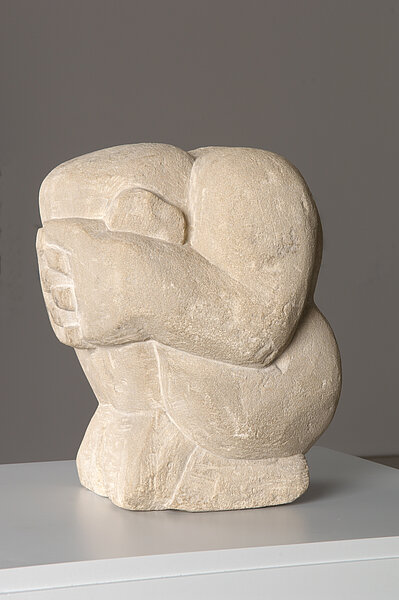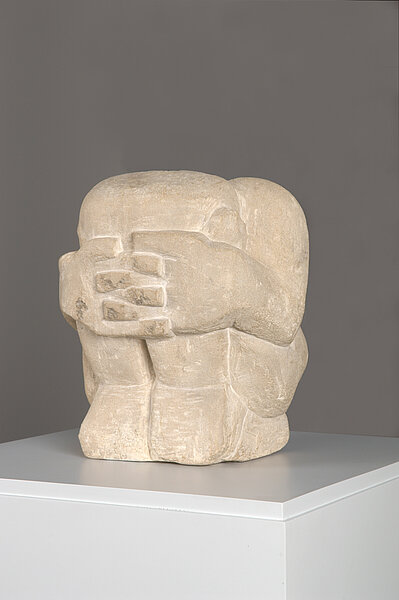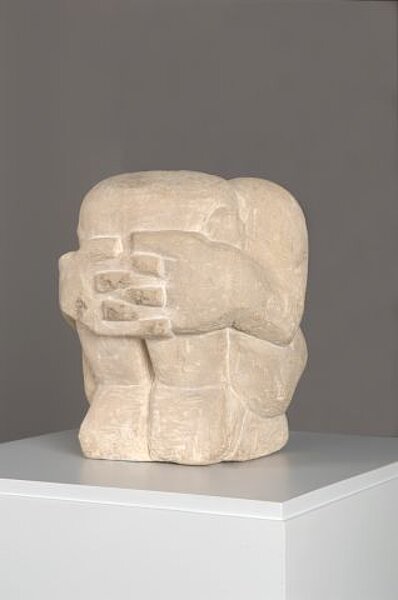
Derain, André
Homme accroupi
Crouching Man
1907
In the context of the discovery of non-European art fauvist painter André Derain with his “Crouching Man” of 1907 radically renounces the sculptural tradition of the 19th century as shaped primarily by Auguste Rodin. Beyond academic ideals of beauty he creates with only a few markings a human figure which takes second place towards the material block as the governing principle of form – an aspect reminiscent of pre-Columbian sculpture. In a new grasp of material Derain moves away from casting and modelling techniques to turn back to directly working the material by “taille directe”. Instead of the academic procedure whereby the sculpture produces an initial design, then translates into plaster and eventually commissions a craftsman with the final execution here artist and craftsman, concept, and execution are all identical. This permits much more instinctive, direct work in which the artists’ individual style of hand takes precedence. Traces of chisel work left standing reveal the creative process and lend the sculpture the character of a “non finito. “The “Crouching Man” is not accessible to totalizing view since the various facades of the cube enjoy relative autonomy. Arms with large stylized hands locked into one another like square brackets embrace the bulky block of a body into which the head is sunk. The compressed energy stands in a relationship of tension to the abstract material block whose geometrical rigour is only slightly loosened towards the more biomorphic sides and spine. Created in the summer of 1907, André Derain’s sculpture is one of the earliest cubist works of art of all that, through its emphasis on mystical self-absorption, is still reminiscent of symbolist art.
© mumok – museum moderner kunst stiftung ludwig wien


